calsfoundation@cals.org
Big Fork (Polk County)
aka: Bigfork
Big Fork is an unincorporated community in the Ouachita Mountains of Polk County at an elevation of 308 m (1,020 ft.). It is located on Arkansas Highway 8, about 29 km (18 mi.) east of Mena (Polk County).
After 1820, a large westward expansion brought settlers to Arkansas, and the Ouachita Mountains attracted many people from northern Georgia to Big Fork. Land in western Arkansas was fairly inexpensive and easy to obtain, and an early settler did not have to pay taxes for five years on land purchased. There were many pioneer families who migrated from Georgia to Big Fork, including the Abernathy, Bates, Beck, Dilbeck, Edwards, Goss, Smith, Turner, and Vandivier families. Some early families of Big Fork also migrated there from Tennessee. The Pleasant Grove Cemetery off Polk County Road 613 just east of Big Fork includes graves of many of these pioneer families and their descendants.
One early school at Big Fork was called “the Shed School” because it was located on land owned by a Mr. Shed (or Shedd). Washington Himer Smith (1849‒1904) was an early schoolteacher at Shed School. The school was a simple, board building sitting on a hill. It had no glass windows, and the benches were made of split logs.
Pinckney Hooper was appointed postmaster in April 1872, and George V. Bates was appointed in June 1875. Thompson Shed was appointed in April 1876, and the next postmaster appears to have been Lewis J. Hendricks, appointed in June 1882.
About 1880, a professor of natural science and geology at the University of Iowa, Samuel Calvin (1840‒1911), came to Polk County to photograph rock formations. His gallery includes photos taken east of Mena, which are mostly of geological formations in the woods. He also took a photograph of an early hotel and post office that served the Big Fork community at that time.
Just to the northwest of the community of Big Fork on Polk County Road 67 is the Big Fork Creek Natural Area, a small, moderately dry tract of land supporting an abundance of ferns and wildflowers, a free-flowing spring, and a small section of Big Fork Creek. Near the spring are a bluff and stream terrace that support an exceptional example of a diverse mesic hardwood forest with several rare plant species that are characteristic of the Big Fork area. Another watershed of the area is Butcherknife Creek, which runs directly through town.
The Polk County Library in Mena has a branch library in Big Fork. Two other establishments in Big Fork include the Big Fork Baptist Church and the Big Fork Community Center.
In 2019, Grace Fountain of Big Fork donated to the Ouachita Mountains Biological Station a house and three acres of land in Big Fork. The property, just off Highway 8, consists of a two-bedroom frame house and a permanent spring and creek that flows across the property in the back yard and joins Big Fork Creek, which then joins Butcherknife Creek. The residence will be used as housing for those conducting biological research in the area.
Big Fork includes 10,365 nearby mines. Interestingly, barium, silver, uranium, and zinc mines were located in Big Fork at one time. Claims were originally filed between the 1940s and 2010s. By 2020, there were eighteen active mining claims and 10,347 closed mining claims. The Lost Hatchet Mine near Big Fork was mined for manganese; it closed, with no known plans to re-open. Another, the Slatington Mountain Prospect, was first discovered in 1916. Preliminary development there has taken place, with such actions as surface trenching, adits, shafts, drill holes, geophysics, geochemistry, or geological mapping.
Big Fork Township is a high-risk area for tornadoes. The largest tornado in the Big Fork Township area was an EF4 in 1952 that caused nine injuries and seven deaths. On April 25, 2011, Big Fork was reportedly hit by an EF1 tornado, causing extensive tree damage. This was part of the historic April 25–28, 2011, super tornado outbreak.
For additional information:
Big Fork, Arkansas. http://bigforkark.blogspot.com/ (accessed September 16, 2020).
Lost Hatchet Mine, Big Fork, Arkansas. The Diggings. https://thediggings.com/mines/usgs10260383 (accessed September 16, 2020).
Pleasant Grove Cemetery, Big Fork, Arkansas. http://argenweb.net/polk/pgrove.htm (accessed September 16, 2020).
Williams, Troy, and Leon Toon, eds. History of Polk County. Dallas, TX: Curtis Media Corp., 1988.
Chris T. McAllister
Eastern Oklahoma State College
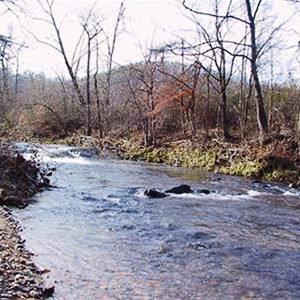 Big Fork Creek
Big Fork Creek 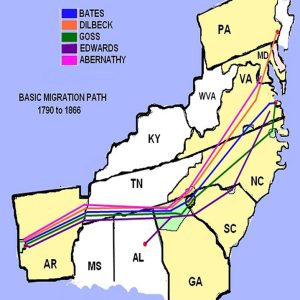 Big Fork Families
Big Fork Families 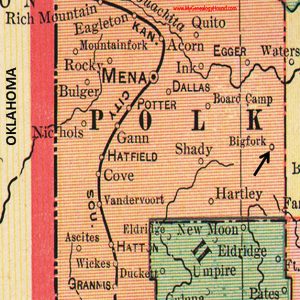 Big Fork Map
Big Fork Map 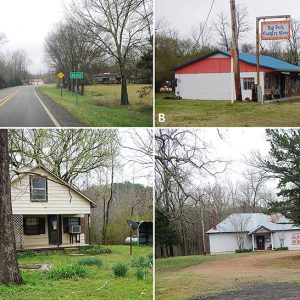 Big Fork Scenes
Big Fork Scenes 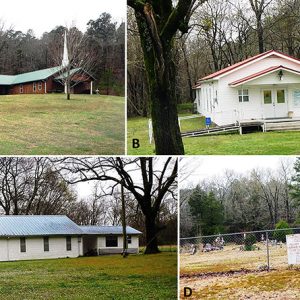 Big Fork Scenes
Big Fork Scenes  Big Fork Scenes
Big Fork Scenes  Polk County Map
Polk County Map 




Digging a little deeper into the families of Big Fork, Polk County, Arkansas. My grandmother was born and raised there, and the family name was Ratliff. Apparently my father was the result of a Fountain and a Ratliff back in the 1940s so I’m researching both families. I went to a couple of cemetery cleanup days at Pleasant Hill with my grandmother before her passing but have not been back since.
Our family, Ray and Sally Ragan and my sister Pat and me, moved to Big Fork in 1947. We bought a house from the Morphew family. We found the folks around there friendly. I enjoyed school in the one-room schoolhouse, taught by Miss Vida Autry. So many fond memories of the year and a half we were there.